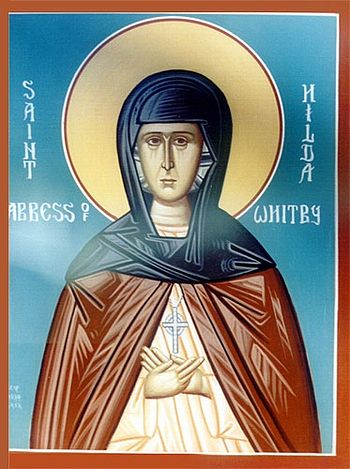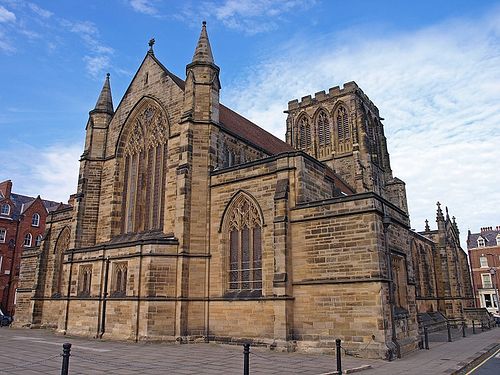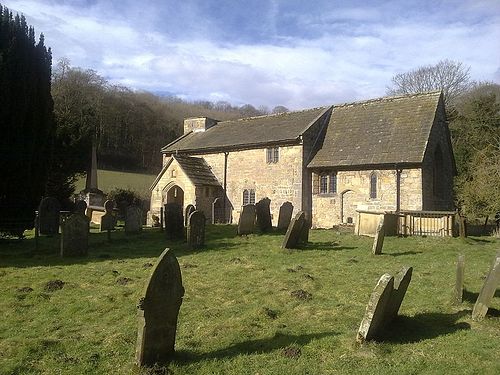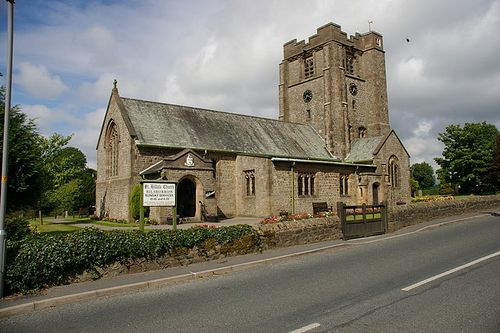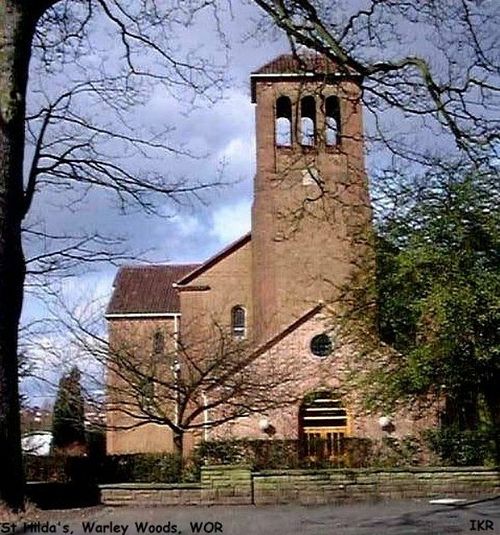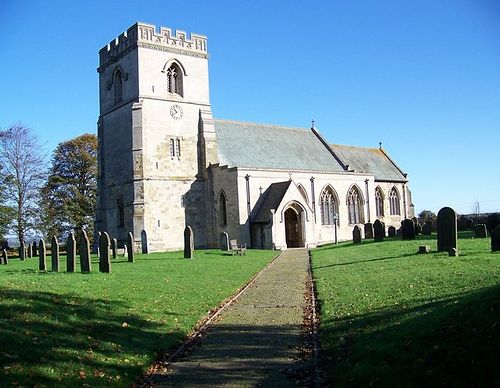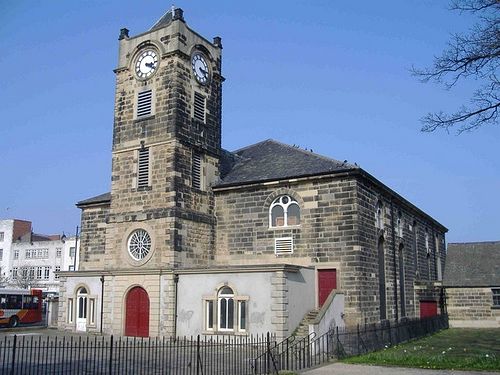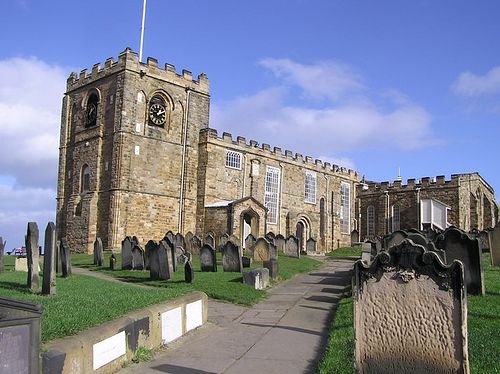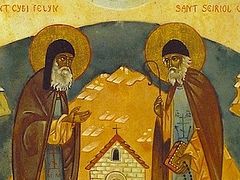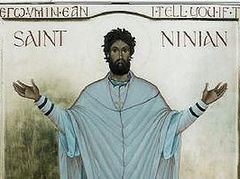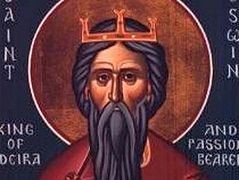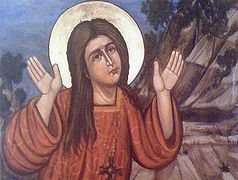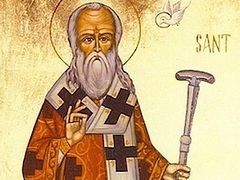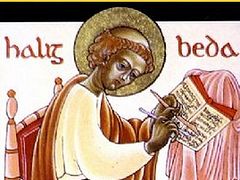St. Hilda (Hild) is one of the most venerated female saints in England and is also known as “The Abbess of the English People.” She was born in 614 in the north of what is now England, where her parents lived in exile in the small British kingdom of Elmet in the north of Yorkshire.
When Hilda was still an infant, her mother once had a dream in which she found a most precious necklace under her clothes that filled the whole England with the glory of its brilliance. This dream was indeed fulfilled in her daughter Hilda, who gained great holiness and became a true light and living example for many pious people. Hilda was baptized by the holy Bishop Paulinus of York when she was very young. Her family was related to the holy King Edwin of Northumbria, and she was most probably brought up at the royal court of Northumbria during his reign. Beyond a doubt, she spent the first half of her life among her close relatives.
At the age of 33 she became a nun and in 647 she entered the convent of Hartlepool (its name means “a stag by the sea”) on the River Tees near the city of Durham (now in County Durham). Her spiritual father for a long time was the holy Bishop Aidan of Lindisfarne. Hilda visited the kingdom of East Anglia and was about to leave for Gaul to live there in the convent of Chelles, but St. Aidan called his spiritual daughter back to Northumbria where he allotted her a small parcel of land on the north bank of the River Wear. Here the future saint, together with several other devout nuns, was taught the traditions of the Irish monasticism that had been brought to England by St. Aidan. Soon after that, Hilda was appointed the second abbess of the double monastery of Hartlepool after St. Hieu1. The new abbess organized the life in this community after the pattern of Irish monasteries.
In 655, before the battle with the huge army of the pagan King Penda of Mercia, King Oswiu prayed fervently to God and vowed that if he were victorious he would bestow lands throughout the whole kingdom for the foundation of monasteries. A miracle happened; Penda was killed in battle and his army suffered a crushing defeat. Fulfilling his promise, Oswiu bestowed twelve estates for the establishment of monastic houses. Hilda obtained about 1200 acres in the town of Whitby (its original name was Streneshalc; the modern name “Whitby”, which means “white town”, came about in the twelfth century) in the east of the present-day county of North Yorkshire. Here the abbess in 657 founded a double monastery (with separate communities for monks and nuns, but all praying together in the common church) and began to care for it. The Lord granted a great future to this foundation.
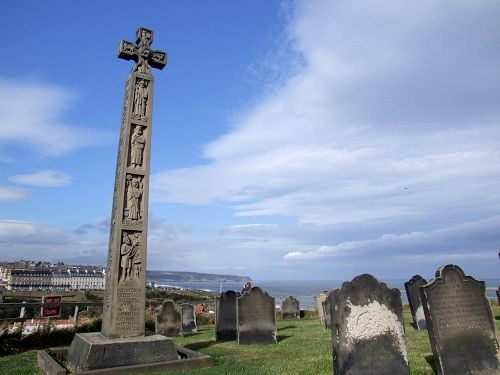 St. Caedmon's Cross in Whitby
St. Caedmon's Cross in Whitby These lands obtained by Hilda could not boast of picturesque scenery. On one side of the monastery there were the Yorkshire moors, while on the other side there was the endless ocean whose waves constantly crashed against the cliffs that protected the monastery. Thanks to St. Hilda, Whitby became famous as a model for monastic life, a great spiritual and intellectual centre, whose glory spread all over England and far beyond. Literature and the arts, spiritual and secular sciences, and various crafts developed in Whitby and, above all, a strict monastic life was practised. Under St. Hilda's patronage, St. Caedmon (†c. 680, commemorated February 11/24), an English poet of that time, who composed many fine poems on Christian themes, was tonsured in the monastery. With the active participation of St. Hilda, the vital Synod of Whitby was held in 663-664; here it was decided to follow the Roman and Orthodox method for calculating the date of Easter and to accept the Roman form of monastic tonsure in the English Church.
St. Hilda was an able, active and extremely energetic abbess; the most important duties of monks and nuns who were in her care were to study the Holy Scriptures thoroughly and to do good works. St. Hilda herself collected rich libraries, taught priests and other clerics Latin and literature. The wisdom and prudence of this holy woman were held in such high esteem that even kings and bishops asked for her advice. Many Church figures and scholars, rulers and ordinary folk—everybody, greatly venerated St. Hilda and considered her their spiritual preceptor. Venerable Hilda took special care of the poor and the oppressed, for which she was revered and loved as “the mother of her country”.
St. Hilda's holy life, authority, popularity, and influence played a considerable role in the unification of the Church and the spread of Christianity in the second half of seventh-century England. The example of St. Hilda demonstrates that monasticism and the education of women in early England were at a very high level; indeed England produced not only numerous holy, wise and gifted abbots and spiritual fathers, but also numerous abbesses and spiritual mothers. Five monks who had been educated at Whitby later became bishops and four of them are venerated as saints, these are: St. John of Beverley, Wonderworker; St. Wilfrid the Younger, Bishop of York; St. Bosa, Bishop of York; and St. Hedda, Bishop of Winchester.
The fame of the monastery of Whitby, “a great monastery, famous for its strict rules and holy life of its monks and nuns, a smithy of saints and a school of future bishops”, as well as its Venerable Abbess Hilda spread all over England very quickly. St. Hilda was a great supporter of the activities of St. Theodore, the only Greek Archbishop of Canterbury, who was in fact to unite the whole English Church and English State. According to a legend, in the region of Whitby St. Hilda turned all the snakes into stones by her prayers—it is said that some of these stones can be seen to this day! The details of St. Hilda's life can be found in the book of Venerable Bede of Jarrow, The History of the English Church and People.
For the last six years of her life, St. Hilda suffered from a certain grave and chronic ailment. It is supposed that it may have been some form of fever. However, her physical suffering by no means affected the power of her spirit or shook her zeal as abbess and mentor. It is said that the saint wished to depart this life at the convent of Hackness (now the village with the same name in North Yorkshire), which she had founded not long before her death—but this was not to happen. Having taken Holy Communion for the last time, Hilda reposed peacefully on 17 November 680 at the age of sixty-six. The repose of this great woman-saint was accompanied by miracles. At the very moment when her holy soul left her body, bells miraculously began to ring in the monastery of Hackness—just thirteen miles from Whitby—and the night before Hilda's repose a saintly nun called Begu saw angels carrying the saint’s soul to the heavenly dwellings. A sister at the Whitby monastery had the same vision as well.
Many miracles occurred at St. Hilda’s relics and pilgrims flocked to them over the centuries. Among the successors of St. Hilda as Abbess of Whitby were the talented and wise Abbesses St. Enfleda and St. Elfleda. Some 25 years after Hilda’s repose the earliest life of St. Gregory the Great (known in the East as Gregory the Dialogist), the Pope of Rome and organizer of the mission to England, was composed in Whitby. It should also be mentioned that the Whitby Monastery was for a long time the main monastery in Northumbria and was closely connected with the royal family, and was the burial place of the royal family of Deira.
From the very end of the eighth century on, the pagan Danes began to raid the monasteries of England. In 867 the monastery at Whitby was destroyed, but St. Hilda’s relics were rescued. It was recorded that part of her relics were translated to Glastonbury under Edmund I (939-946), and portions of her relics were also kept at St. Peter’s monastery in Gloucester and at the monastery in Durham. In 1078 the Norman, Roman Catholic monastery of St. Peter and St. Hilda was built on the site of St. Hilda’s original foundation. This existed until its dissolution during the Reformation in 1539. St Hilda was venerated throughout England, but especially in the north of the country. No fewer than fifteen ancient churches are dedicated to her.
Today, the small and pretty town of Whitby, standing on the North Sea coast, with the well-preserved Abbey ruins, the ancient church of St. Mary the Virgin, two churches in honour of St. Hilda (one Anglican and one Catholic) and other churches, is visited by pilgrims of various Christian denominations. Another attraction of Whitby is its famous 199 steps which are already over 600 years old. They lead from the “lower part of the town” to the east cliff, or “the upper part” where the abbey ruins are located. Most tourists use precisely these ancient steps to reach the Abbey.
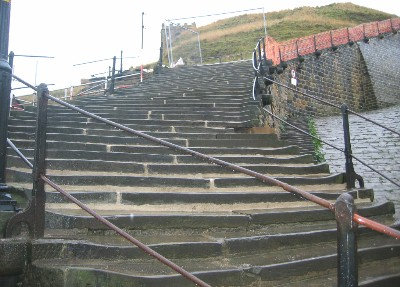 199 steps in Whitby
199 steps in Whitby 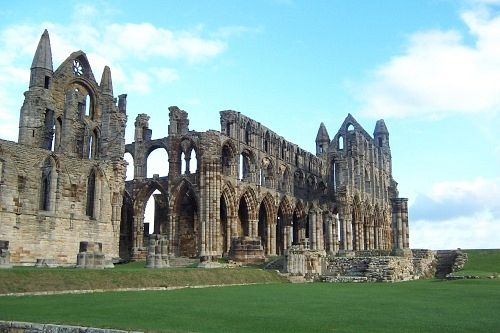 Whitby Abbey ruins
Whitby Abbey ruins There is a popular local belief that seabirds do not fly above the Abbey ruins as a token of reverence for the holy abbess; and even if some dare to fly above the ruins, then they slow down each time—in honour of the saint! St. Hilda is and always has been venerated as a patroness of education, learning, culture and poetry. Schools and colleges for girls in many countries are named in honour of Hilda. In England the College of St. Bede and St. Hilda in Durham and St. Hilda’s College in Oxford are named after her. Churches dedicated to St. Hilda can be found in the USA and Canada. “Hilda” is still a baptismal name for girls in England and in Germany. According to tradition, the head of St. Hilda is kept at Durham Cathedral to this day.
Holy Abbess Hilda, pray to God for us!

